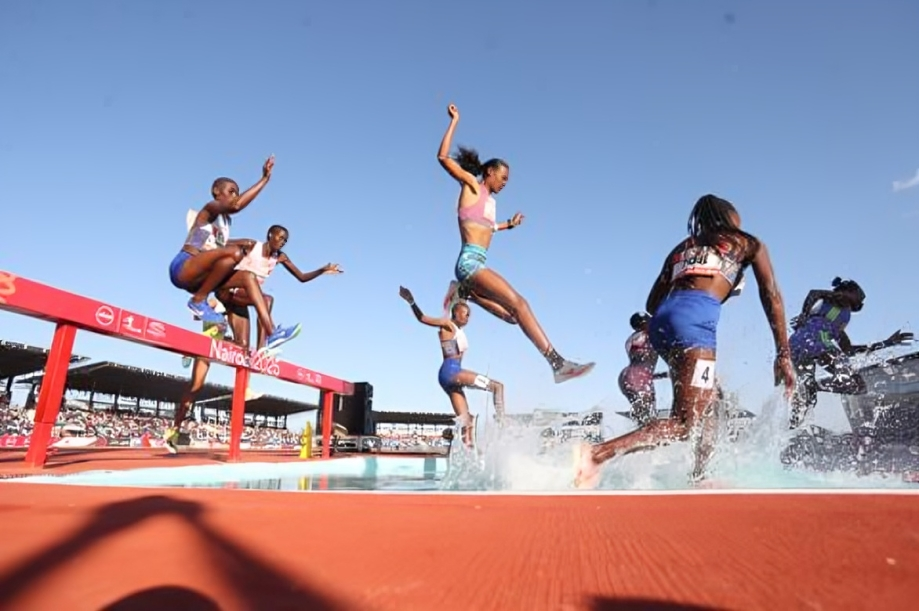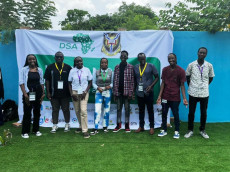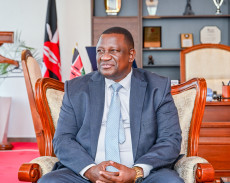- Witnessing rivals dominate on home soil should ignite a fire within Kenya's emerging talent. It serves as a clear indicator that the competition is intensifying and that resting on past laurels is no longer an option.
- Kenya has an unparalleled winning history in the 3000m steeplechase, particularly on the men's side, and a strong presence in other 3000m events. For decades, the phrase "Kenyan dominance" was almost synonymous with the event.
The recently concluded Absa Kipkeino Classic athletics in Kenya presented a stark reality in the 3000m race, particularly in the women's steeplechase: Ethiopian dominance.
While Kenya has historically been synonymous with prowess in long-distance running, and specifically the 3000m steeplechase, the sight of an Ethiopian podium sweep in the women's event, and strong Ethiopian performances across other 3000m disciplines, served as a potent reminder of the evolving landscape in global athletics.
This paradigm shift is notable, especially in the absence of established stalwarts like Faith Kipyegon. Kipyegon, a reigning world and Olympic champion in the 1500m and a formidable force even over longer distances, was not competing in the 3000m at the Classic.
Her absence, while potentially strategic in her season's planning, certainly created a vacuum that Ethiopian new elites, such as the impressive Wosane Asefa, who led the steeplechase charge, were quick to fill.
This points to a broader trend in which Ethiopia consistently nurtures and unveils a strong cohort of young, hungry, and exceptionally talented athletes who are ready to step onto the global stage and challenge for top honors.
This raises a crucial question for Kenyan athletics: Is this a room for motivating blooming athletes, or a sign of deeper issues? Optimistically, it absolutely can be a powerful motivator.
Witnessing rivals dominate on home soil should ignite a fire within Kenya's emerging talent. It serves as a clear indicator that the competition is intensifying and that resting on past laurels is no longer an option.
For young Kenyan runners, seeing new faces from Ethiopia claim victories should fuel their ambition and drive to train harder, smarter, and with even greater determination.
However, a more critical lens reveals potential challenges.
Kenya has an unparalleled winning history in the 3000m steeplechase, particularly on the men's side, and a strong presence in other 3000m events. For decades, the phrase "Kenyan dominance" was almost synonymous with the event.
The recent results at the Kipkeino Classic suggest that this historical advantage is being actively challenged.
Is this a definitive shift in dominance? It's too early to declare a complete handover. Kenya still showcased strength in events like the men's 1500m, with Abel Kipsang leading a Kenyan 1-2-3 finish. The emergence of young Kenyan talent hitting qualifying marks is also a positive indicator for the future.
However, the Kipkeino Classic served as a crucial barometer. It highlighted that global athletics is becoming increasingly competitive, and the days of unchallenged Kenyan dominance in specific events may be waning.
For Kenya to maintain its esteemed position on the world stage, it must not only nurture its new crop of athletes but also strategize to counter the rising challenge from rivals, particularly from Ethiopia in the distances, and from a broader international field in other disciplines.
The lessons from Nairobi must be absorbed, not as a cause for despair, but as a vital call to action for Athletics Kenya and individual athletes alike to adapt, innovate, and reclaim their historical prowess.
What is the Plan for Kenya?
Simply relying on innate talent and high-altitude training alone might no longer be sufficient. A multi-pronged approach is essential:
Investment in Youth Development and Coaching
While Kenya has a strong grassroots running culture, there needs to be a more structured and sustained investment in identifying, nurturing, and scientifically training young athletes from an early age.
This includes access to proper facilities, nutrition, sports psychology, and elite-level coaching that incorporates modern training methodologies. The emphasis should be on holistic athlete development, not just raw talent.
Strategic Race Planning for Elite Athletes
For established stars like Faith Kipyegon, their race schedules need to be carefully managed to ensure peak performance at major championships.
However, there also needs to be a balance that allows for the development of the next tier of athletes.
This could involve encouraging veterans to participate in a wider range of local competitions when appropriate, providing mentorship, or even acting as pacesetters for younger talents.
Diversifying Training Regimens
While traditional Kenyan training methods have been incredibly successful, there is a need to explore diversified training approaches, incorporating more specialized technical work for events like the steeplechase, as well as enhanced strength and conditioning programs.
Learning from Rivals
Ethiopia's consistent production of world-class athletes warrants close observation. Understanding their talent identification processes, training philosophies, and support structures could provide valuable insights for Kenya.
Boosting Local Competition
The Kipkeino Classic is a vital platform. Ensuring that such events attract the best possible talent, both local and international, consistently, is crucial for benchmarking and pushing Kenyan athletes to higher levels. The presence of international competition, even when it leads to a loss, is invaluable for growth.
The Absa Kipkeino Classic served as a significant barometer. It highlighted the undeniable rise of new Ethiopian talent in the 3000m.
For Kenya, it's a moment of reflection and an opportune time for a strategic re-evaluation. This isn't a crisis, but rather a compelling call to action.
By proactively addressing the evolving competitive landscape, investing in its blooming athletes, and refining its athletic development strategies, Kenya can reclaim its undisputed winning history and ensure that its flag continues to fly high on the global athletics stage for generations to come.












